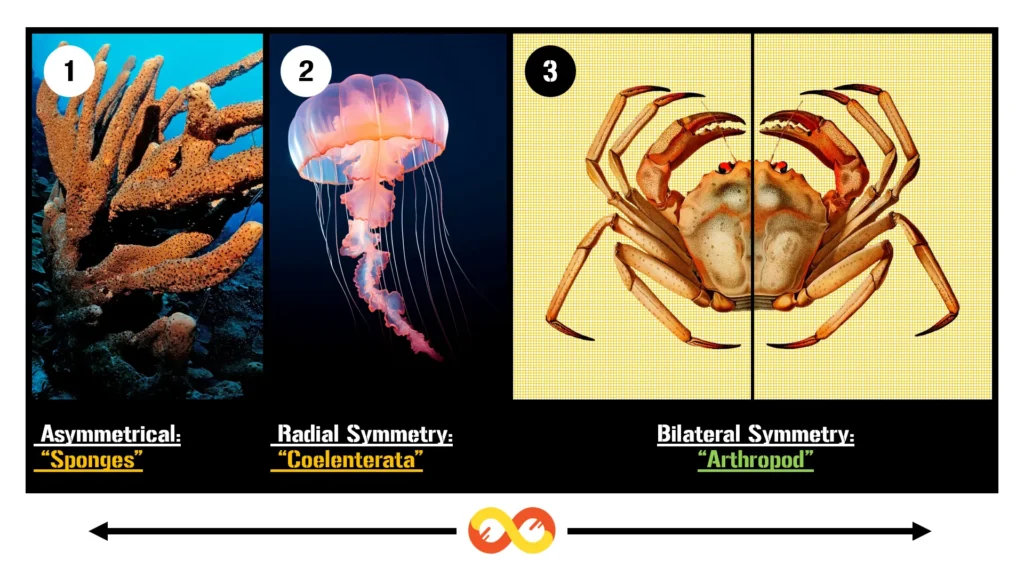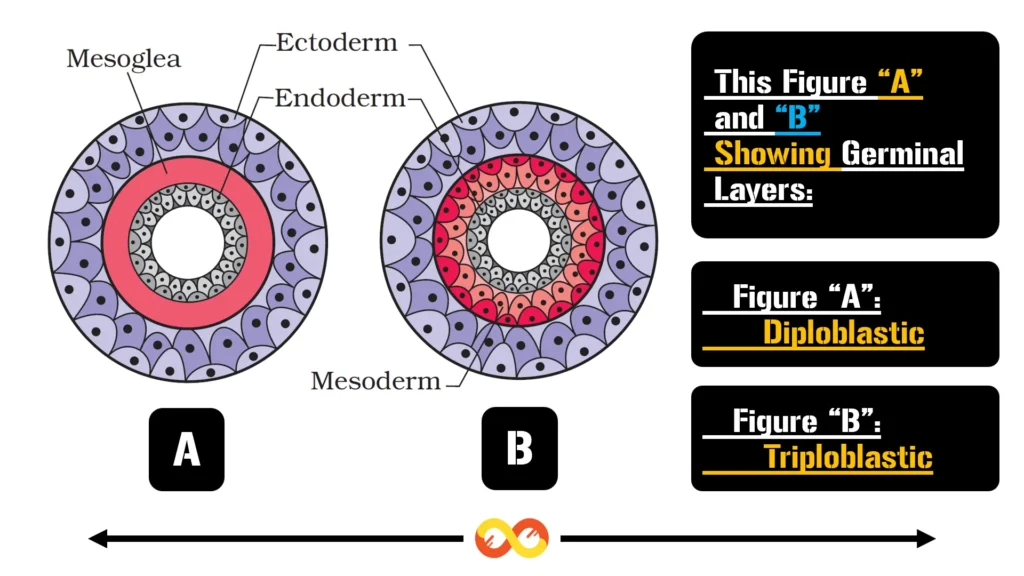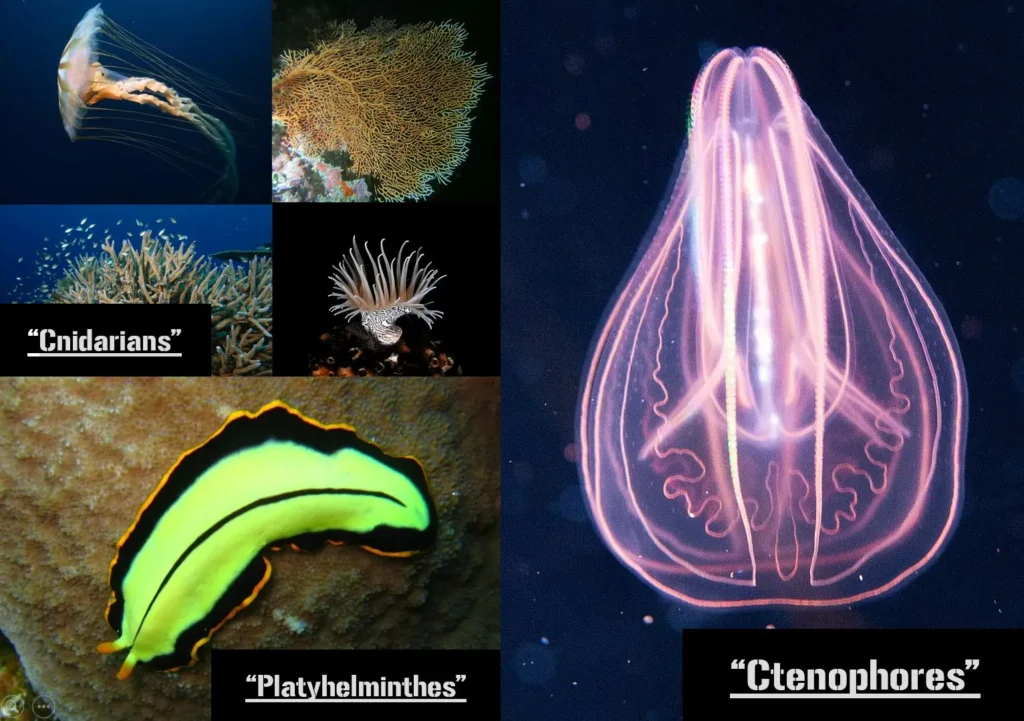The classification of the animal kingdom is a systematic process of organizing animals into hierarchical categories based on shared characteristics. This process enables scientists to understand the relationships between different species and trace their evolutionary history. The ranking system typically consists of predetermined levels such as kingdom, family, or genus, which provide a structured framework for categorization. Depending on the goal of the classification, the basis of this system may vary, but evolutionary and morphological similarities often serve as its foundation.
Table of Contents
Animal Kingdom: Basis of Classification
The Animal Kingdom, encompassing all known animals, is the largest of the five kingdoms of life. Animals share a common mode of nourishment, known as the heterotrophic mode of nutrition, which distinguishes them from plants. These organisms are multicellular eukaryotes, lacking a cell wall and chlorophyll, and their bodies exhibit a wide range of complexities. Classification within the animal kingdom is based on several fundamental characteristics, including cell arrangement, body symmetry, level of organization, coelom development, and the presence or absence of a notochord.
To better understand the diversity of animals, scientists have divided the animal kingdom into 11 distinct phyla, each characterized by unique traits.
Key Characteristics for Classification
The classification of animals is guided by several critical characteristics, which include:
- Levels of Organization
- Symmetry
- Diploblastic and Triploblastic Organization
- Coelom Development
- Segmentation of the Body
- Presence or Absence of Notochord
Levels of Organization
Organisms are classified based on the complexity and functionality of their biological systems. These levels include:
- Cellular Level: Animals in this category have cells arranged as loose aggregates, with minimal specialization. An example is sponges.
- Tissue Level: Here, cells performing similar functions are grouped into tissues. This level is seen in Coelenterates.
- Organ Level: Tissues with related functions form organs, each with a specific role. This level is found in Platyhelminthes.
- Organ System Level: Organs form systems that work together to perform complex physiological functions. This level is observed in Arthropods, Echinoderms, and Chordates.
Symmetry

Symmetry refers to the arrangement of body parts in relation to an axis. Animals exhibit three main types of symmetry:
- Asymmetrical: These organisms lack symmetry. An example is sponges.
- Radial Symmetry: The body can be divided into identical halves along multiple planes passing through the central axis. Examples include Ctenophores and Coelenterates.
- Bilateral Symmetry: The body is divisible into identical halves only along a single plane. This symmetry is found in Molluscs and Arthropods.
Diploblastic and Triploblastic Organization

During the embryonic stage, animals develop germ layers that determine their structural complexity:
- Diploblastic Organisms: These animals have two germ layers: ectoderm and endoderm. Examples include Cnidarians and Ctenophores.
- Triploblastic Organisms: These animals possess three germ layers: ectoderm, mesoderm, and endoderm. Examples include Platyhelminthes and Chordates.

Coelom Development

The coelom is the main body cavity that houses the internal organs. Based on the presence or absence of a coelom, animals are categorized into:
- Acoelomate: Organisms lacking a coelom. Example: Platyhelminthes.
- Coelomate: Animals with a well-defined coelom lined by mesoderm. Examples include Annelids, Molluscs, and Arthropods.
- Pseudocoelomate: These animals have a false coelom, as the cavity is not entirely lined by mesoderm. Example: Aschelminthes.
Segmentation of the Body
Certain animals display a segmented body structure, with distinct patterns or divisions. Examples include Arthropods, Chordates, and Annelids.
Presence or Absence of Notochord
The notochord is a rod-like structure derived from the mesoderm, providing structural support during the embryonic stage and, in some species, throughout adulthood.
- Chordates: Organisms with a notochord. Examples include vertebrates, mammals, and tunicates.
- Non-Chordates: Animals lacking a notochord. Examples include Platyhelminthes, Ctenophores, and Annelids.
Animal Kingdom Classification
The presence or absence of a notochord serves as the primary criterion for classifying animals into two broad groups: Chordates and Non-Chordates. The notochord, composed of a cartilage-like substance, provides support and defines these categories.
Chordates
The Phylum Chordata includes all animals with a notochord at some stage of their development. This group comprises vertebrates and certain invertebrates. While all chordates possess a notochord, not all chordates are vertebrates. Chordates exhibit bilateral symmetry and are further divided into three subphyla:
- Urochordata (Tunicates)
- Cephalochordata (Lancelets)
- Vertebrata (Vertebrates)
Urochordata
Commonly known as tunicates, these animals have a body covered by a tunic made of tunicin, a cellulose-like substance. The notochord is present only in the larval stage and disappears in adults. Larvae are motile, while adults are generally sessile.
Examples: Ascidia, Salpa, Doliolum.
Cephalochordata
These animals retain the notochord throughout their lives. They are bilaterally symmetrical, with well-developed pharyngeal gill slits and a tail.
Examples: Branchiostoma (Lancelets).
Vertebrata
The most advanced chordates, vertebrates have a vertebral column that replaces the notochord in adults. They exhibit high levels of cephalization, a multi-layered epidermis, and a complex nervous system.
Subclasses of Vertebrata include:
- Pisces (Fishes): Aquatic organisms with fins for movement. Examples: Rohu, Catla.
- Amphibia: Cold-blooded animals that lay eggs in water. Examples: Frog, Toad.
- Reptilia: Ectothermic species with scales or bony plates. Examples: Tortoise, Snake.
- Aves (Birds): Organisms with wings adapted for flight. Examples: Parrot, Pigeon.
- Mammalia: Warm-blooded animals with mammary glands. Examples: Humans, Monkeys.
Characteristics of Chordates
Chordates share the following defining traits:
- Notochord: A cartilaginous rod providing support.
- Dorsal Nerve Cord: A hollow structure running along the dorsal side.
- Pharyngeal Slits: Openings connecting the throat to the external environment.
- Post-Anal Tail: A muscular extension aiding in locomotion.
Non-Chordates
Non-chordates are animals that lack a notochord. These organisms exhibit significant diversity and belong to phyla such as Porifera, Coelenterata, Ctenophora, Platyhelminthes, Aschelminthes, Annelida, Arthropoda, Mollusca, Echinodermata, and Hemichordata.
Characteristics of Non-Chordates
- Body Structure: Cylindrical, triploblastic, and coelomate or pseudocoelomate.
- Respiration: Through gills, trachea, or body surface.
- Reproduction: Can be sexual or asexual, with external fertilization common.
- Circulatory System: Typically open in nature.
Conclusion
The animal kingdom represents a vast array of life forms, each with unique traits and adaptations. Through systematic classification, scientists gain insights into their complexity, evolutionary relationships, and ecological roles. From simple sponges to complex mammals, the study of animal taxonomy continues to uncover the incredible diversity of life on Earth.
Related Articles
- Animal Kingdom: A Comprehensive Exploration
- Classification of the Animal Kingdom: A Comprehensive Exploration
- Understanding Coelom Development: A Comprehensive Exploration
- Chordates: The Marvels of Biological Diversity, and its Detailed Exploration
- Non-Chordates: An In-Depth Comprehensive Exploration
- Phylum Porifera: Characteristics, and Examples of the Pore-Bearing Animals
- Phylum Coelenterata: The Simplest Group of Multicellular Invertebrates
- Phylum Ctenophora: The Marvels of Comb Jellies
- Phylum Platyhelminthes: Understanding the Fascinating World of the Flatworms
- Phylum Nematoda: Biology, Classification, Roles, and Its Significance
- Phylum Annelida: Characteristics and its Classification with Detailed Exploration
- Phylum Aschelminthes: The World of Pseudocoelomates
- Phylum Arthropoda: The Most Diverse Kingdom of Life
- Phylum Mollusca: Characteristics, Classification, and Its Significance
- Phylum Echinodermata: The Marvels of the Marine World
- Phylum Hemichordata: A Comprehensive Exploration of Marine Half-Chordates
- Levels of Organization in Animals: A Comprehensive Exploration
- Symmetry in Animals: Definition, Types, and Importance with Detailed Exploration
Video Links Related to Animal Kingdom
- Intro to Animal Kingdom – Biology
- Classification of animals – Animal Kingdom – Biology
- Animal Classification – Evolution – Biology – FuseSchool
- Animal kingdom: Basis of classification – Biological Classification
Read More Articles
- The Living World
- Biological Classification
- The Evolution of Biological Classification Systems
- Kingdom Monera: The World of Bacteria
- The Diversity and Importance of Bacteria: Archaebacteria and Eubacteria
- Kingdom Protista: A Diverse Group of Single-Celled Eukaryotes
- Archaebacteria: A Glimpse into Ancient Life Forms
- Eubacteria: Structure, Characteristics, Classification, and Types
- The Five Kingdom Classification with Perfect Examples
- Ribosomes: The Cellular Machinery for Protein Synthesis
- Autotrophic Nutrition: An In-Depth Exploration
- Understanding the Cell Wall: Structure, Composition, and Function
- Chrysophytes: A Detailed Exploration of Their Classification, Characteristics, & Significance
- Dinoflagellates: The Whirling Protists of the Oceans
- Euglenoid: The Unique Plant-Animal Hybrid
- Slime Moulds: A Comprehensive Overview
- Protozoans: Structure, Classification, Characteristics, and Examples
- Kingdom Fungi: A Comprehensive Exploration
- Fungi: Definition, Characteristics, Classification, and Uses
- Phycomycetes: A Detailed Exploration of the Lower Fungi
- Ascomycetes – A Detailed Exploration of Characteristics, Reproduction, and Importance
- Basidiomycetes: A Comprehensive Study of Club Fungi
- The Deuteromycetes: A Comprehensive Study of Imperfect Fungi
- Kingdom Plantae: A Comprehensive Overview of the Plant Kingdom
- Kingdom Animalia: Definition, Classification, and Characteristics
- Biological Classification
- Exploring the Complex World of Viruses, Viroids, Prions, & Lichens
- Understanding the Plant Kingdom: A Comprehensive Exploration of Kingdom Plantae
- The Comprehensive Guide to Algae: Definition, Characteristics, Types, and Importance
- Comprehensive Overview of Chlorophyceae: Detailed Classification, Structure, & Reproductive Mechanisms
- Phaeophyceae: An In-Depth Exploration of Brown Algae
- Rhodophyceae: Comprehensive Guide to Ancient Red Algae of the Marine World
- Bryophytes: A Comprehensive Exploration of the Amphibians of the Plant Kingdom
- The Fascinating World of Liverworts: Structure, Habitat, and Reproduction
- Mosses: A Comprehensive Guide to its Biology, Classification, and Significance
- Pteridophytes: A Comprehensive Guide to its Characteristics, Classification, Life Cycle, and Importance
- Gymnosperms: Comprehensive Exploration of the Ancient Seed-Bearing Plants Without Flowers or Fruits
- The Wonders of Angiosperms: A Comprehensive Exploration of Flowering Plants
- Difference Between Gymnosperms and Angiosperms: A Comprehensive Guide
Frequently Asked Questions (FAQs)
What is the basis of classification in the Animal Kingdom?
The classification of the animal kingdom is a hierarchical system designed to categorize animals based on shared characteristics. This classification considers several criteria:
- Levels of Organization: Animals are classified according to the complexity of their biological organization, ranging from cellular-level (e.g., Sponges) to organ-system level (e.g., Chordates).
- Symmetry: Animals can be asymmetrical (Sponges), radially symmetrical (Coelenterates, Ctenophores), or bilaterally symmetrical (Arthropods, Molluscs).
- Germ Layers: Animals are divided into diploblastic (e.g., Cnidarians) and triploblastic (e.g., Chordates) based on the number of embryonic germ layers they possess.
- Coelom Development: Based on the presence or absence of a body cavity (coelom), animals are classified as acoelomates (Platyhelminthes), pseudocoelomates (Aschelminthes), or coelomates (Annelids, Molluscs).
- Segmentation: Certain animals exhibit segmentation of the body, as seen in Annelids and Arthropods.
- Presence or Absence of Notochord: Animals with a notochord are termed Chordates (Humans, Fishes), while those without are classified as Non-Chordates (Porifera, Cnidarians).
These criteria help biologists group animals based on their evolutionary relationships and structural similarities.
What are the key characteristics of animals in the Kingdom Animalia?
Animals in the Kingdom Animalia share the following characteristics:
- Heterotrophic Nutrition: Unlike plants, animals depend on other organisms for food.
- Eukaryotic and Multicellular: Animal cells are eukaryotic, meaning they contain a nucleus and other organelles, and animals are composed of multiple cells.
- Lack of Cell Wall and Chlorophyll: Unlike plants and fungi, animal cells lack a cell wall and chlorophyll.
- Organizational Levels: Animals show various levels of structural organization, from cellular-level (Sponges) to organ-system level (Chordates).
- Reproduction: Animals reproduce sexually or asexually, with sexual reproduction being the dominant mode in higher animals.
- Symmetry and Body Plan: Animals exhibit asymmetry, radial symmetry, or bilateral symmetry, depending on their evolutionary lineage.
These shared traits make the Animal Kingdom one of the most diverse biological groups.
What are the different levels of organization in animals?
The levels of organization in animals represent their structural complexity:
- Cellular Level: Found in sponges, this level features loosely organized cells without forming tissues. Each cell functions independently.
- Tissue Level: Seen in Coelenterates, cells performing similar functions are grouped into tissues, leading to a higher level of specialization.
- Organ Level: In animals like Platyhelminthes, tissues combine to form specialized organs with distinct functions.
- Organ-System Level: Found in advanced animals like Arthropods, Molluscs, and Chordates, where organs work together in systems (e.g., digestive system, nervous system) to perform complex physiological functions.
These levels mark the evolutionary advancement of animals, with higher levels indicating greater complexity.
How is symmetry used to classify animals?
Symmetry refers to how an animal’s body can be divided into equal halves. Animals are classified based on their symmetry as follows:
- Asymmetrical: Animals like sponges lack any form of symmetry and cannot be divided into equal halves.
- Radial Symmetry: Found in Ctenophores and Coelenterates, radial symmetry allows the body to be divided into identical halves through multiple planes passing through the central axis.
- Bilateral Symmetry: Animals like Molluscs and Arthropods exhibit bilateral symmetry, where a single plane divides the body into two equal halves, making movement and sensory organization more efficient.
Symmetry provides insights into an animal’s evolutionary adaptations and lifestyle.
What is the difference between diploblastic and triploblastic organisms?
Diploblastic organisms have two embryonic germ layers:
- The ectoderm (outer layer) and
- The endoderm (inner layer).
These animals, such as Cnidarians and Ctenophores, exhibit simple body structures.
Triploblastic organisms, on the other hand, have three germ layers:
- The ectoderm,
- The mesoderm (middle layer), and
- The endoderm.
This additional layer (mesoderm) in animals like Platyhelminthes and Chordates enables the development of complex organs and systems.
This distinction highlights the evolutionary advancement of triploblastic organisms over diploblastic ones.
What is a coelom, and how does it classify animals?
The coelom is a fluid-filled body cavity lined by mesodermal tissue. It allows for the development of complex organs and organ systems. Animals are classified based on their coelom into:
- Acoelomates: Animals without a coelom. Example: Platyhelminthes.
- Pseudocoelomates: Animals with a false coelom, where the cavity is not fully lined by mesoderm. Example: Aschelminthes.
- Coelomates: Animals with a true coelom. Examples: Annelids, Arthropods.
The presence of a coelom represents a significant evolutionary advancement, as it enables the development of specialized organs.
What is segmentation in animals?
Segmentation refers to the division of an animal’s body into repetitive segments, each potentially performing specific functions. This feature is seen in advanced animals like:
- Annelids: Segments contain similar sets of organs.
- Arthropods: Segments are specialized for functions like movement, reproduction, and sensory perception.
- Chordates: Vertebral segmentation supports the body and protects the spinal cord.
Segmentation provides flexibility and facilitates efficient movement.
What is the role of the notochord in classifying animals?
The notochord is a flexible, rod-like structure derived from the mesoderm that provides support to the body. It serves as the basis for classifying animals into:
- Chordates: Animals with a notochord at some stage of their life. Examples: Humans, Fishes.
- Non-Chordates: Animals without a notochord. Examples: Sponges, Molluscs.
The notochord is a defining feature of the phylum Chordata.
How are Chordates classified?
Chordates are classified into three subphyla:
- Urochordata (Tunicates): The notochord is present only in the larval stage. Examples: Ascidia, Salpa.
- Cephalochordata (Lancelets): The notochord persists throughout life. Example: Branchiostoma.
- Vertebrata: The notochord is replaced by a vertebral column in adults. Examples: Humans, Mammals.
What are the characteristics of Non-Chordates?
Non-Chordates are animals that lack a notochord. Key characteristics include:
- A wide range of body plans and levels of organization.
- Modes of respiration through gills, body surface, or tracheae.
- Reproduction that can be sexual or asexual.
- Open circulatory system in most species.
Examples of non-chordates include Porifera, Cnidaria, and Arthropoda.
What distinguishes Vertebrates from Invertebrates?
Vertebrates, a subgroup of Chordates, possess a vertebral column, advanced nervous system, and complex organ systems. Examples include mammals, birds, and fishes.
Invertebrates lack a vertebral column but may possess a notochord during their larval stages. Examples include insects and mollusca.
What are the subgroups of Vertebrata?
Vertebrata is divided into:
- Pisces (Fishes): Aquatic, gill-breathing. Example: Rohu.
- Amphibia: Dual life in water and land. Example: Frogs.
- Reptilia: Cold-blooded, with scales. Example: Snakes.
- Aves: Feathered, adapted for flight. Example: Pigeons.
- Mammalia: Warm-blooded, with mammary glands. Example: Humans.
Why are mammals unique in the Animal Kingdom?
Mammals are distinguished by:
- Mammary Glands: For feeding young.
- Hair or Fur: Provides insulation.
- Advanced Organ Systems: Well-developed brain and heart.
- Internal Fertilization: Viviparous nature (live birth).
Examples: Humans, Monkeys, Tigers.
What is the evolutionary significance of pharyngeal slits in Chordates?
Pharyngeal slits, found in all Chordates during some stage, serve functions like respiration and filter-feeding in aquatic species. In terrestrial vertebrates, they evolve into structures such as the Eustachian tube in humans.
How do Non-Chordates contribute to ecological systems?
Non-Chordates play vital roles in ecosystems:
- Decomposers: Sponges and worms recycle nutrients.
- Pollinators: Insects like bees support plant reproduction.
- Food Source: Molluscs and arthropods serve as prey.
Their diversity ensures the stability of ecological systems.
